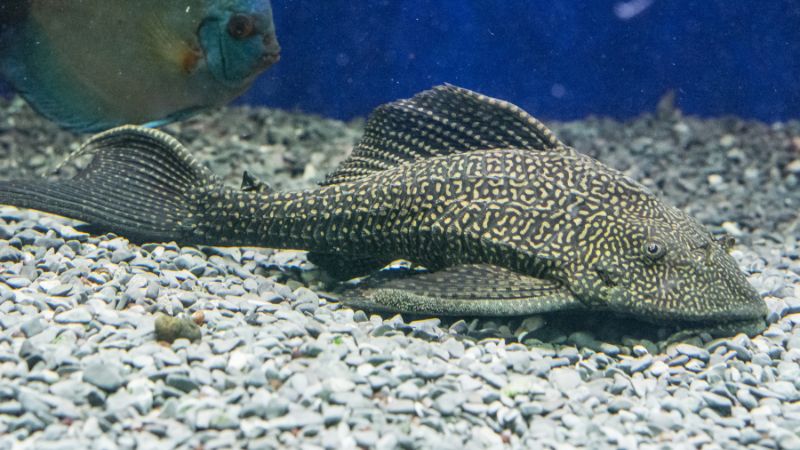Recently, there has been a lot of buzz surrounding the use of ‘glass-cleaning fish’ meat in cuisine, sparking debates about its safety. This article aims to delve into the question, “Is glass-cleaning fish meat poisonous?” Let’s find out!
1 What is a Glass-Cleaning Fish?
Glass-cleaning fish, also known as aquarium catfish or suckermouth catfish, is a popular tropical fish in aquariums. Its scientific name is Hypostomus plecostomus, characterized by a dark brown body, a rough skin texture, and a large mouth.
These fish are renowned for their efficient “cleaning” abilities as they primarily feed on algae, moss, and slime that accumulate on plants or the aquarium floor. By doing so, they help maintain a pristine aquatic environment and curb the growth of harmful microorganisms.
Typically, glass-cleaning fish grow to about 25-30 cm in length. However, some larger species can reach up to 50-70 cm and weigh between 1 to 2 kilograms, with some giant specimens weighing up to 7 kilograms.
Introduced to Vietnam, glass-cleaning fish quickly adapted to their new environment due to their rapid reproduction and strong survival instincts. Nonetheless, Vietnam’s Ministry of Natural Resources and Environment has categorized this species as alien, requiring control measures to prevent potential ecological disruptions.
 What is a Glass-Cleaning Fish?
What is a Glass-Cleaning Fish?
2 Is Glass-Cleaning Fish Meat Poisonous?
The question, “Is glass-cleaning fish poisonous?” has intrigued many. According to Dr. Dinh Tran Ngoc Mai from the Department of Nutrition and Dietetics at Ho Chi Minh City University of Medicine and Pharmacy, there have been no reported cases of fatalities resulting from consuming glass-cleaning fish meat. However, this does not imply that all species of glass-cleaning fish are safe for consumption.
The family of glass-cleaning fish, Loricariidae, is a large group of catfish that encompasses numerous genera and species. Some species within this family possess venomous spines in their dorsal and pectoral fins, which they use for defense against predators. This venom is produced by subcutaneous glands and can lead to dangerous symptoms if one is stung or bitten, including local swelling, redness, hemorrhage, tissue necrosis, and systemic disturbances.
Given the diversity of glass-cleaning fish species and the potential risks associated with their venom, caution is advised when considering consuming them. It is recommended to purchase glass-cleaning fish from reputable sources that can guarantee their origin and safety. Proper preparation and cooking techniques are also crucial to minimize any potential risks.
 Is Glass-Cleaning Fish Meat Poisonous?
Is Glass-Cleaning Fish Meat Poisonous?
3 Precautions When Eating Glass-Cleaning Fish
While glass-cleaning fish can be a tasty and nutritious meal, there are some important considerations to ensure a safe and enjoyable dining experience:
-
Thoroughly clean and prepare the fish before cooking. Use hot or boiling water to remove any slime and reduce the fishy odor.
-
The scales of glass-cleaning fish are quite hard and sharp, posing a risk of mouth injuries. Therefore, carefully remove the scales before cooking.
-
If you have a sensitive digestive system or experience digestive issues, it is advisable to limit or avoid consuming glass-cleaning fish.
-
Opt for fresh, live glass-cleaning fish from reputable sources with clear origins to ensure food safety.
 Precautions When Eating Glass-Cleaning Fish
Precautions When Eating Glass-Cleaning Fish
This article has addressed the question of whether glass-cleaning fish meat is poisonous and provided essential precautions to consider when consuming this type of fish. Hopefully, this information will be valuable to you!
Source: Long Chau Pharmacy
Explore 12 Amazing Destinations for Biking Trips
Unlock Vietnam in a brand new way with an exciting biking tour! Discover the stunning beauty of the country with Dien May XANH’s top 12 must-see destinations. From sweeping plains to clear blue beaches and mountainous vistas – experience all the sights with your own personal cycling tour. Find your ideal route and set out for an adventure today!



































